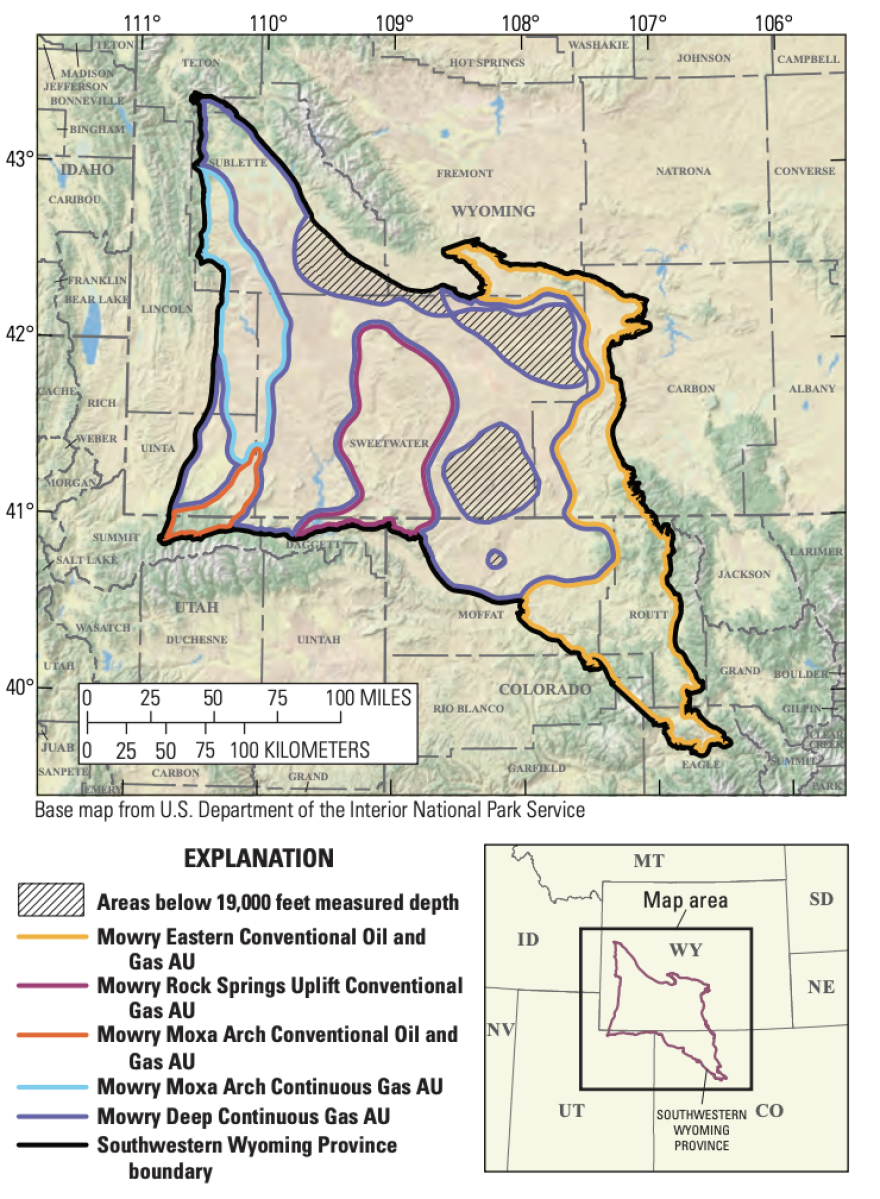Our region has an enormous untapped natural gas and oil source, according to the U.S. Geological Survey.
A new assessment says there’s about 27 trillion cubic feet of natural gas — close to what the U.S. consumes in a year — and 473 million barrels of oil under southwest Wyoming, northwest Colorado and a sliver of Utah. But all those resources may not actually be recoverable.

They come from a prehistoric ocean now known as the Mowry Shale, which provides energy through silica-rich shells. The shale rock isn’t too hard to drill into on its own since it’s very breakable, but it’s embedded with clays called bentonite that are hard to get through.
“I kind of picture it as a peanut butter cracker sandwich, so the crackers are very brittle and the peanut butter is very squishy,” said Scott Quillinan, senior director of research at University of Wyoming’s School of Energy Resources.
Supported by state funding, Quillinan is helping lead a team researching how to unlock these resources, largely in northeast Wyoming in the Powder River Basin, where the Mowry Shale also exists.
Horizontal drilling, or fracking, has helped some companies access oil and gas within this rock layer, but production is still in its infancy. Tim Fischer, the university’s oil and gas program manager, says it’s one of the most complicated rocks to drill.
“The ultimate oil recovery is not usually as high as the oil in place,” Fischer said. “And so that's always the challenge. It's the extraction.”

It remains to be seen how the discovery will interact with the Bureau of Land Management’s recently adopted resource management plan for 3.6 million acres around Rock Springs in southwest Wyoming. The plan seeks to balance energy development and conservation. It's currently being reviewed by the Trump administration.
“[These are] incredible resources that are being identified,” Quillinan said. “This information should be considered as that process continues to move forward.”
Fischer said exploring new sources of oil and gas is important to avoid an energy crisis as AI data centers consume more and more of it.
Secretary of the Interior Doug Burgum said in a press release that “We Map, Baby, Map” these resources to support domestic energy production. Now the question is whether companies will invest and drill, baby, drill.
This story was produced by the Mountain West News Bureau, a collaboration between Wyoming Public Media, Nevada Public Radio, Boise State Public Radio in Idaho, KUNR in Nevada, KUNC in Colorado and KANW in New Mexico, with support from affiliate stations across the region. Funding for the Mountain West News Bureau is provided in part by the Corporation for Public Broadcasting.









